Climate Preparedness Research Underway in India: Protecting Traffic Police from Deadly Heat Wave Threats
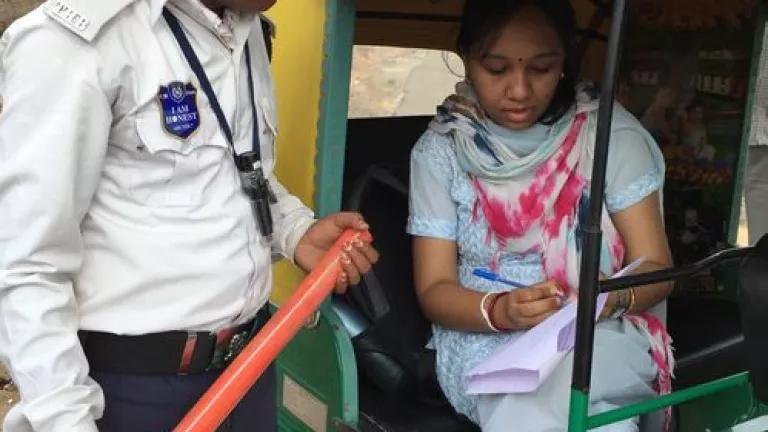
Guest Blog by Amee Raval, NRDC India Climate Intern and Abhiyant Tiwari, Indian Institute of Public Health, Gandhinagar
The recent heat waves of 2015 have devastated many parts of South Asia, and make clear the importance of preparing and protecting vulnerable groups from the impacts of extreme heat in a warming world. Ahmedabad's Heat Action Plan is a strong model for how cities can manage risks from rising temperatures through public outreach, capacity building and interagency coordination. This summer, our research team at the Indian Institute of Public Health, Gandhinagar (IIPH-G) and Natural Resources Defense Council (NRDC), with guidance from experts including Dr. Jeremy Hess, is focusing on understanding the heat-related experiences of traffic police in Ahmedabad, India. Traffic police are an occupational group highly vulnerable to worsening heat and air quality trends. Our collaboration with the City Traffic Police in Ahmedabad is a promising opportunity to expand our targeted approach to heat wave preparedness.
Dr. Priya Dutta administering a questionnaire to a study participant.
Recent Heat Wave Emergencies Highlight Need for Public Health Preparedness Among Vulnerable Groups
The end of June brought scattered monsoon rains in India, providing some respite from the record high temperatures experienced this past summer. The severe heat wave at the end of May was responsible for over 2,000 deaths nationwide, establishing itself as the fifth deadliest in world history. The states of Telangana and Andhra Pradesh were most significantly impacted by the tragic heat wave. As heat-related concerns abated in India, neighboring Pakistan faced a deadly heat wave, with the death toll rising above 1,100.
In the disaster's aftermath, reports highlighted the need for greater public health preparedness efforts to mitigate extreme heat's impact on people. With predictions of more intense and frequent extreme heat events induced by climate change, identifying awareness-building and protective interventions tailored for vulnerable communities is a priority to protect lives. As in many cities, a group particularly at-risk to the health impacts of extreme heat are outdoor workers, e.g. street vendors, traffic police, construction and agricultural workers, who perform physical labor during the hottest hours of the day. The combination of physical stress and heat exposure makes these workers especially susceptive to heat-related illnesses.
Reducing Extreme Heat Vulnerability Among Traffic Police
Currently, our IIPH-G and NRDC research team is focusing on traffic police, who manage congested city roads and heavy traffic on a daily basis. In addition to summer heat, they are also exposed to pollutants from vehicle exhaust and noise from honking. These factors contribute to a dangerous work environment, in which officers are bombarded by harmful environmental stressors. In Ahmedabad, three traffic constables died on duty during the 2013 heat season. These on-duty fatalities indicate that traffic junctions are a workplace of concern during extreme heat events.
The Traffic Police department has made a considerable effort to improve health and comfort of its staff, partly through the implementation of Ahmedabad's Heat Action Plan. These actions include participation in a heat sensitization workshop on heat-related precautions and care, installation of drinking water and toilet facilities at various sites around the city, and other administrative measures.
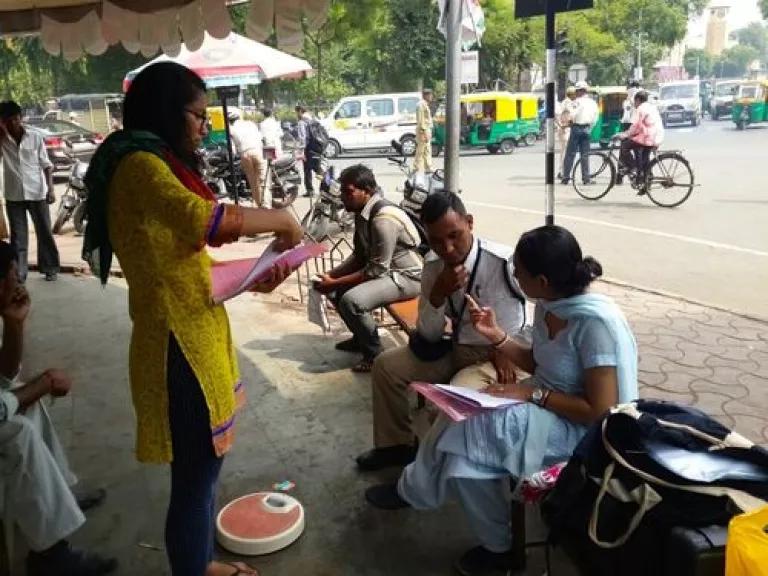
Dr. Priya Dutta and Amee Raval administering a questionnaire to a study participant.
Research Underway Studying Effects of Heat Exposure on Traffic Police
Progress on quantifying the effects of occupational heat exposure on traffic police workers is already underway. During the last few weeks, IIPH-G Research Assistants Dr. Priya Dutta and Dr. Abhiyant Tiwari, Sathish L.M. and NRDC student researcher Amee Raval conducted field visits at four traffic junctions in the city of Ahmedabad. The objective of this year's pilot study is two-fold. The first objective is to measure weekly heat exposures among traffic police on duty during their shift. This component is carried out with a wet-bulb globe temperature (WBGT) area monitor as well as personal temperature data loggers worn by each of the study participants.
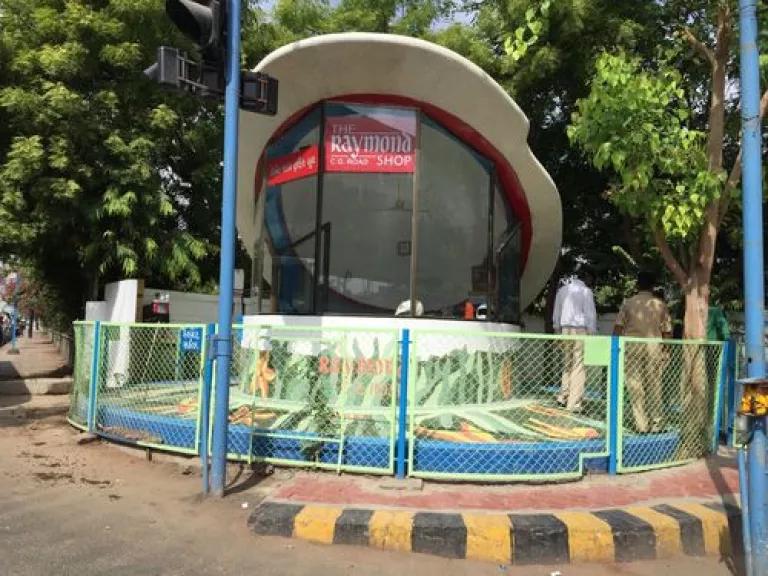
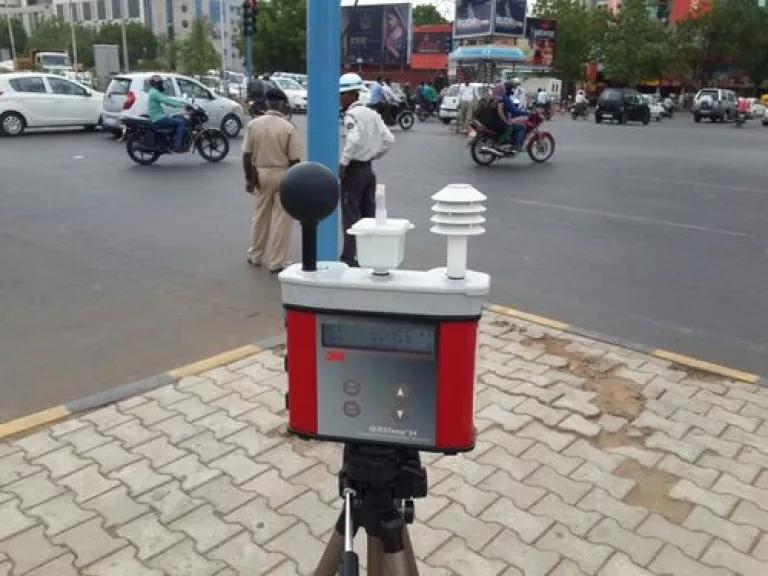
WBGT Monitor up-close at Pakwan Traffic Junction.
The second objective is to evaluate prevalence of heat-related symptoms as well as obtain worker-derived perceived information regarding heat stress and coping mechanisms during this past heat season. This data was collected last week by administering a detailed baseline questionnaire.
Results Key for Proposing Recommendations to City Traffic Police Department
We will be following our 16 study participants over the next six weeks to understand how heat-related symptoms change with the seasonal shift into the monsoon. We are also capturing infrared photographs to identify heat-emitting sources at each traffic junction. Our findings from this project will funnel into a larger prospective study that can be proposed for next year's heat season.
It is our hope that this study will highlight the experiences and concerns of traffic police from this past summer. These findings could inform recommendations for practical interventions to better protect them from extreme conditions next heat season.
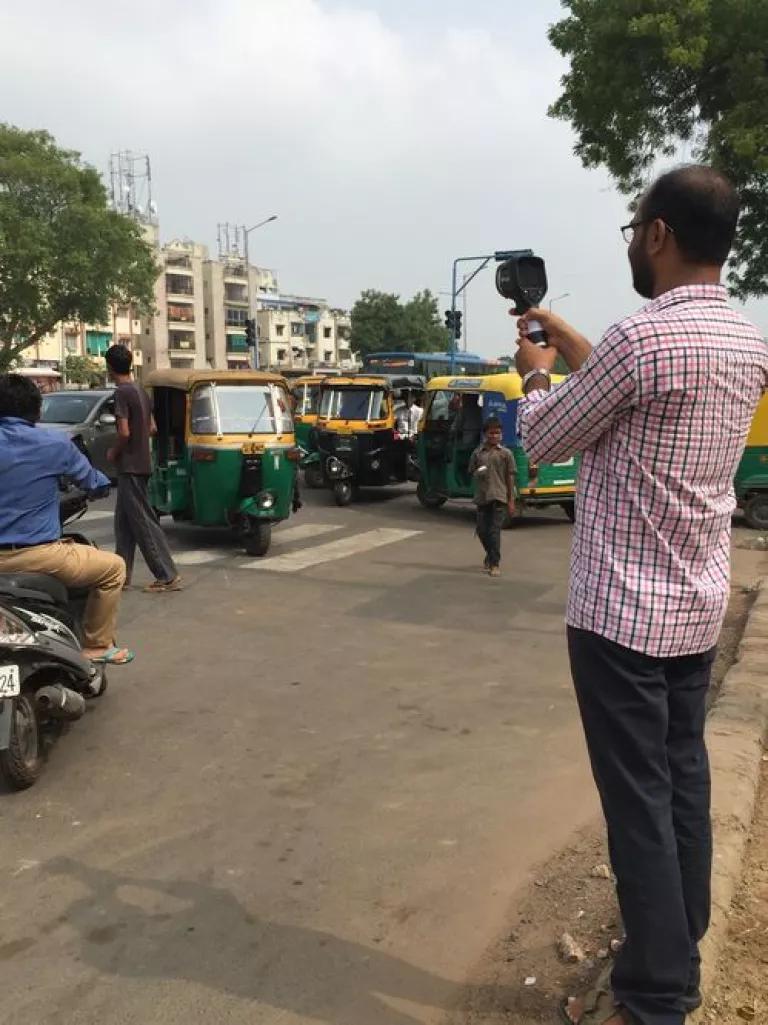
Dr. Abhiyant Tiwari taking infrared photos of study site.
